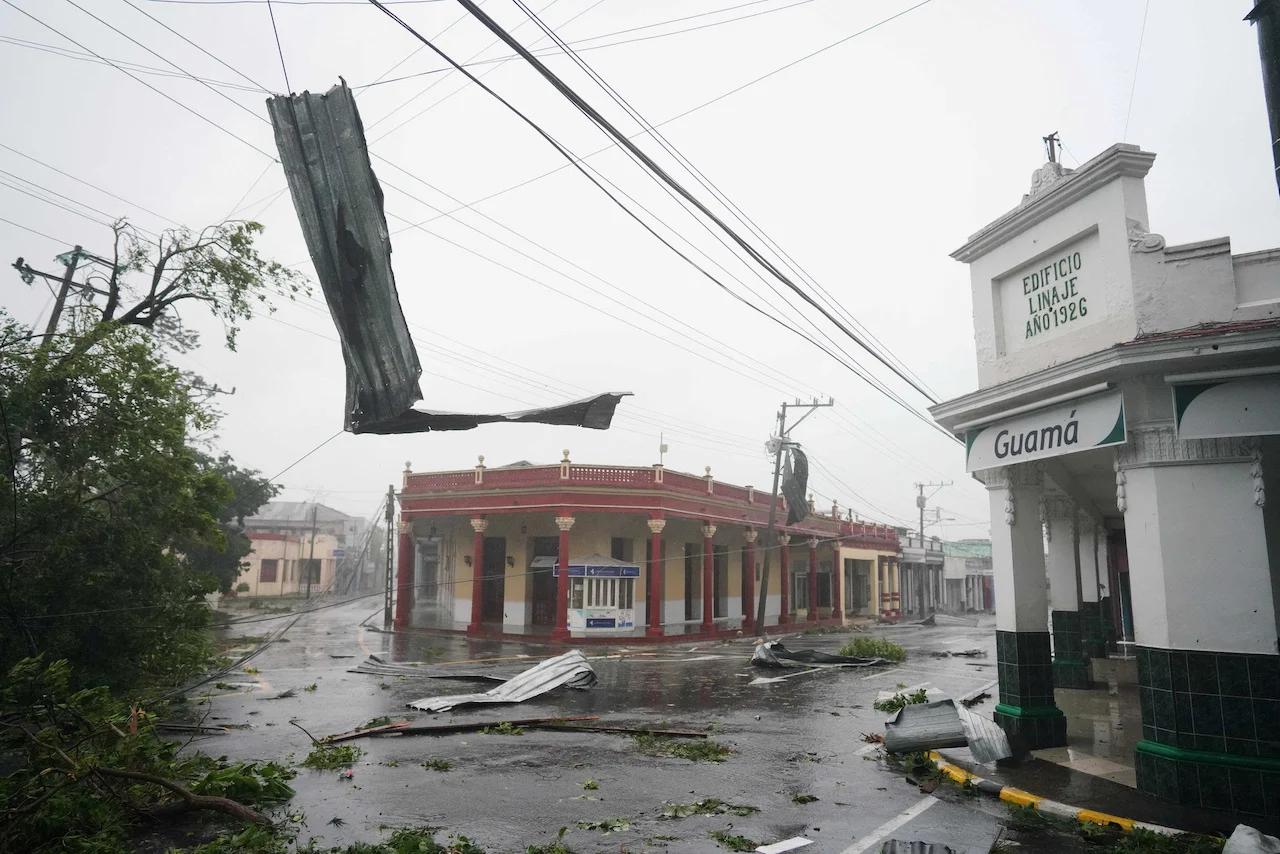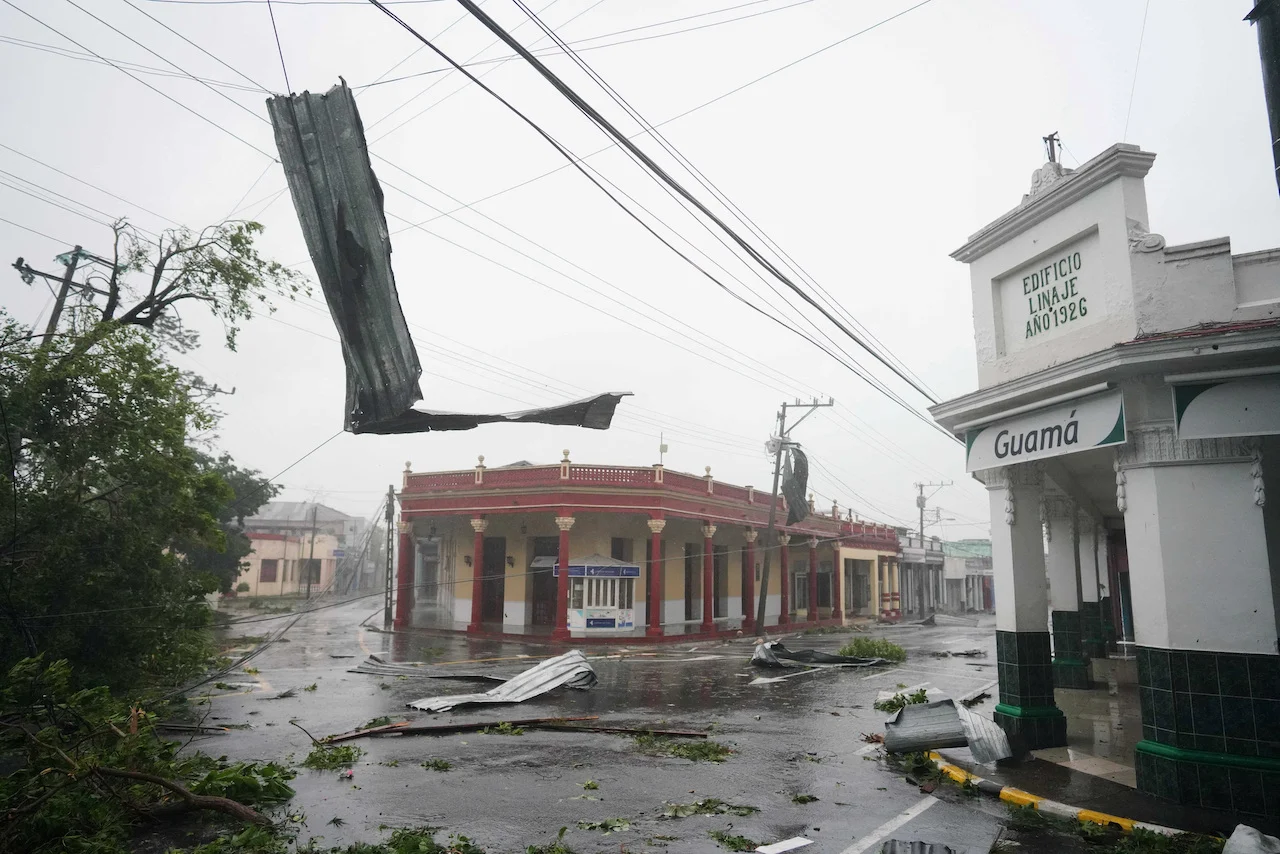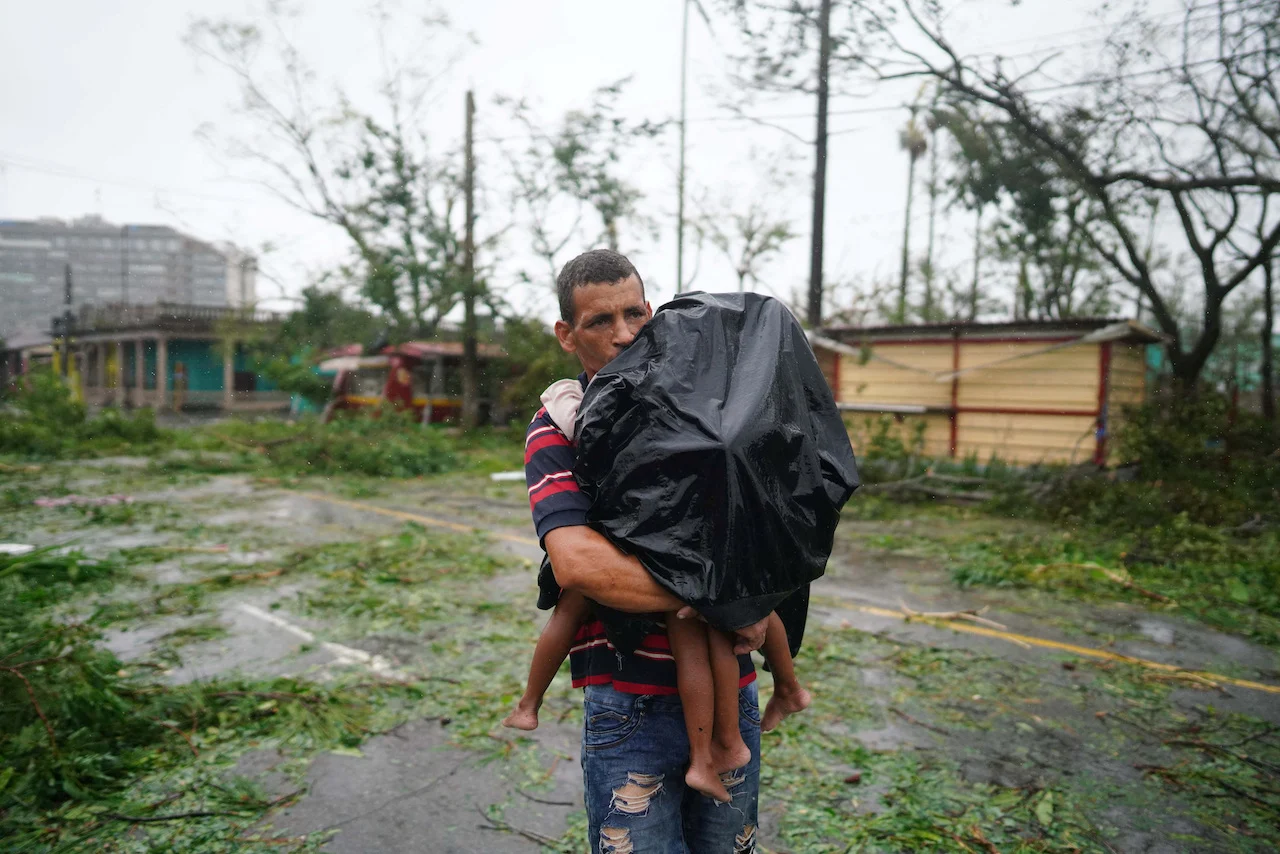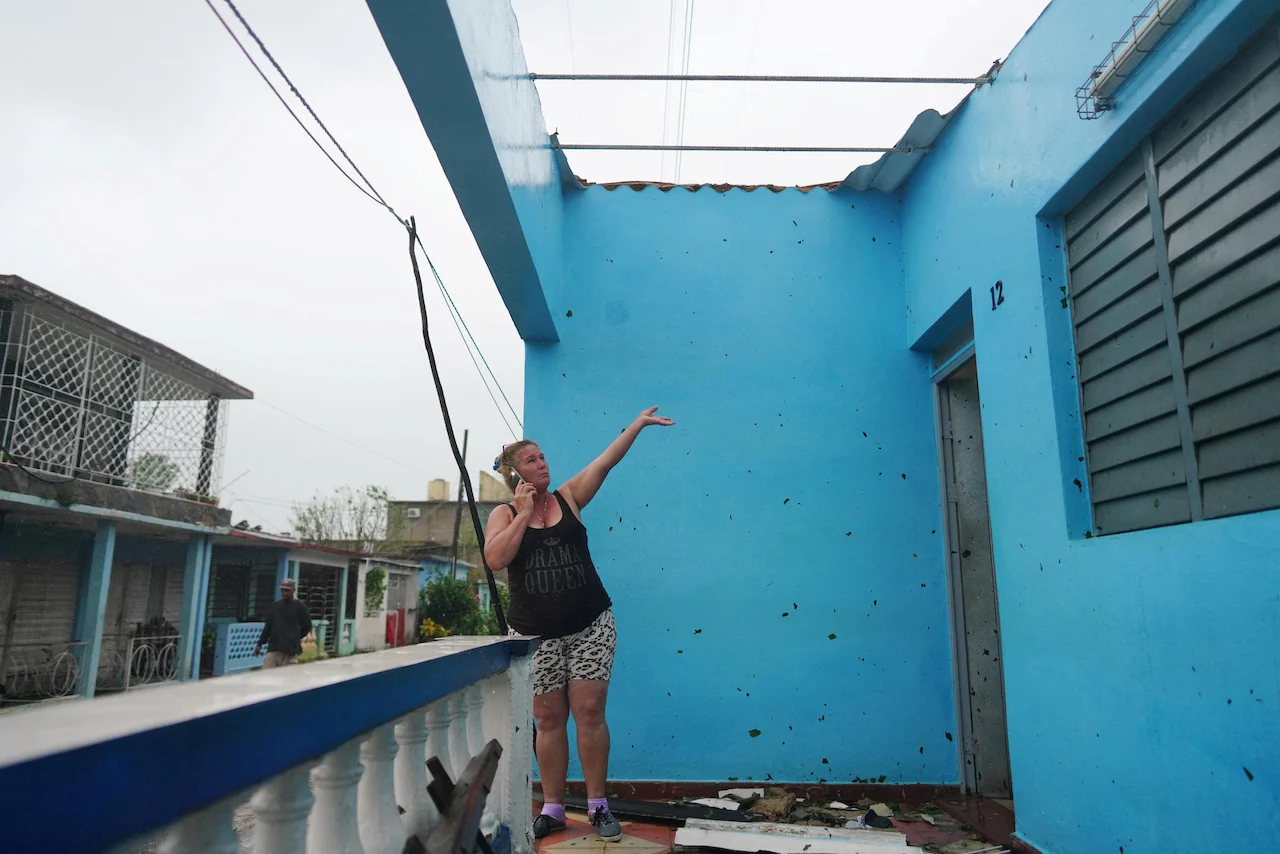
Hurricane Ian barrels north from Cuba, with Florida in its crosshairs
Ian made landfall in Cuba's Pinar del Rio Province early on Tuesday, prompting officials to cut power to the entire province of 850,000 people as a precautionary measure and evacuate 40,000 people from low-lying coastal areas, according to local media reports.
By Dave Sherwood and Nelson Gonzalez
PINAR DEL RIO, Cuba (Reuters) - Hurricane Ian barreled north from Cuba on Tuesday, after forcing evacuations on the island, cutting power to more than 1 million people and flattening homes on its way to Florida, where residents prepared feverishly for the arrival of the massive storm.
The Category 3 hurricane was 265 miles (425 km) south of Sarasota, Florida, by mid-afternoon Tuesday, with maximum sustained winds of 120 miles per hour (195 km per hour), the U.S. National Hurricane Center (NHC) said.
SEE ALSO: What the science says about hurricanes and climate change
Mayelin Suarez, a street vendor who sells ice cream in the Cuban provincial capital of Pinar del Rio, called the night of the storm's passage the "the darkest of her life."
"We almost lost the roof off our house," Suarez told Reuters, her voice trembling. "My daughter, my husband and I tied it down with a rope to keep it from flying away."
The hurricane hits Cuba at a time of dire economic crisis. Even before the storm, hours-long blackouts had become everyday events across much of Cuba and shortages of food, medicine and fuel are likely to complicate efforts to recover from Ian.

Debris hang on the street as Hurricane Ian passes through Pinar del Rio, Cuba, September 27, 2022. REUTERS/Alexandre Meneghini
"Ian has done away with what little we had left," said Omar Avila, a worker a butcher shop in Pinar del Rio after the eye of the storm pushed north from the city. "It's a horrible disaster."
The hurricane is expected to strengthen further on Tuesday after cutting a swath through Cuba's western farm country and emerging over the warm waters of the southeastern Gulf of Mexico, reaching Category 4 strength before it approaches the west coast of Florida, the NHC said.
Ian made landfall in Cuba's Pinar del Rio Province early on Tuesday, prompting officials to cut power to the entire province of 850,000 people as a precautionary measure and evacuate 40,000 people from low-lying coastal areas, according to local media reports.
Violent wind gusts shattered windows and ripped metal roofs off homes and buildings throughout the region, where many houses are decades old and infrastructure is antiquated. Roads into the areas directly hit by the hurricane remained impassable, blocked by downed trees and powerlines.

A man carries his children next to debris caused by the Hurricane Ian after it passed in Pinar del Rio, Cuba, September 27, 2022. REUTERS/Alexandre Meneghini
"I've never seen anything like this," said Ana Julia Gomez, a 56-year-old woman who lives alone in Pinar del Rio, as she surveyed the wreckage inside her storm-ravaged home. "I lost everything; nothing is left."
Pinar del Rio Province is a rural, lightly populated region but a top producer of farm crops and tobacco. State-run media said farmers had secured 33,000 tonnes of tobacco in storage from prior harvests, but many farms buildings, made with thatched palm roofs, had been flattened by the storm.
"Sometimes hurricanes pass through here, but not of this magnitude," said Abel Hernandez, a 49-year-old tobacco farmer. "It destroyed our houses, our drying huts, our farms, the fruit trees, everything."
Neighboring Artemisa Province, nearer Havana, reported that 40% of its banana plantations had been damaged by the storm.
Capital calm
Rain and strong winds ramped up in Havana by Tuesday afternoon, but the city, under a tropical storm watch and preparing for a potential storm surge along its expansive waterfront, was earlier spared the brunt of Ian's fury.
Felix Hernandez, a 51-year-old night watchman at a liquor factory in the Cuban capital, said it had been business as usual in the city. For much of the morning, street vendors were peddling avocado, and lines for chicken - an everyday phenomenon in Cuba - had formed at various points across the old city.

A woman reacts on the phone as she talks about her destroyed roof caused by the Hurricane Ian in Pinar del Rio, Cuba, September 27, 2022. REUTERS/Alexandre Meneghini
"We are incredibly fortunate Ian did not cross Havana because more than half of the city would have collapsed," he said.
Havana's decrepit infrastructure often suffers even in storms much smaller than Ian, as buildings collapse and drainage strains.
By late afternoon, as Ian's winds howled across the city, the power began to falter across the capital and streets emptied as most Havana residents took refuge in anticipation of potential flooding and storm surge.
North of Cuba, Hurricane Ian is expected to bring hurricane-force winds of up to 130 mph (209 kph) and as much as 2 feet (0.6 meter) of rain to the Tampa area on Florida's Gulf Coast starting early on Wednesday through Thursday evening, the National Weather Service said.
The storm surge there could cause devastating to catastrophic damage with some locations potentially uninhabitable for weeks or months, the service warned, urging residents to move to safe shelter before the storm's arrival.
(Reporting by Dave Sherwood in Havana and Nelson Gonzalez and Mario Fuentes in Pinar del Rio; additional reporting by Nelson Acosta in Havana, Rich McKay in Atlanta, Brendan O'Brien in Washington; Editing by Alison Williams and Lisa Shumaker)









